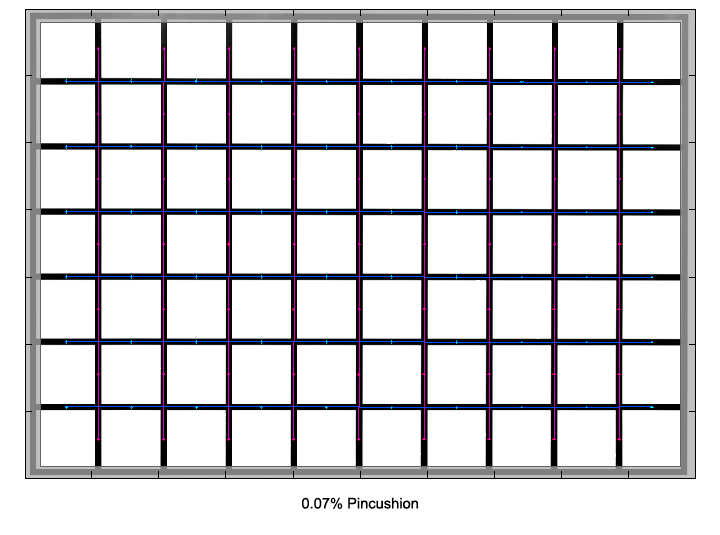|
Page 2 of 2

Distortion
As to be expected from a prime micro lens, the distortion level is very low at just around 0.07%. Allthough measurable in the lab, this can certainly be regarded as distortion-free under field conditions.

The chart above has a real-world size of about 120x80cm.
Vignetting
As a full frame lens the AF-S 60 enjoys the usual sweet spot advantage on the DX test camera. Nonetheless, there's a moderate level of vignetting at f/2.8, which is reduced to a negligible degree by stoping down to f/4 or beyond.

MTF (resolution)
The lens delivers very good resolution across the DX frame at the largest aperture setting already. By stopping down, the resolution in the image center increases to excellent levels, while the borders and corners stay a little lower, but still show very good performance.
From f/16 onwards, diffraction significantly reduces the resolution again. However, this is a physical effect and not a lens issue.
Please note that the MTF results are not directly comparable across the different systems!
Below is a simplified summary of the formal findings. The chart shows line widths per picture height (LW/PH) which can be taken as a measure for sharpness.
If you want to know more about the MTF50 figures you may check out the corresponding Imatest Explanations

Chromatic Aberrations (CAs)
Chromatic aberrations (color shadows at harsh contrast transitions) are a bit pronounced at large apertures, but slowly decrease by stopping down. However, lateral CAs can easily be corrected in post processing and most newer Nikon DSLRs already do this on their own (as well as most of the current RAW converters).

Bokeh
The quality of the bokeh (the out of focus areas) is not only an important property of a macro lens in general. Since the lens behaves like a relatively fast short tele lens on DX cameras, smooth bokeh is certainly a welcome feature for this purpose, too.
The AF-S 60 Micro-Nikkor does not disappoint in this regard and is capable to deliver very smooth blur in the out of focus areas. Thanks to 9 rounded aperture blades, background highlights retain their circular shape until stopped down to or beyond f/11. Unfortunately those highlights tend to show a busy, onion-ring like pattern.

Bokeh Fringing
Bokeh fringing is a common issue with relatively fast glass. It's visible as halos of different colors in out-of-focus areas - magenta (red + blue) in front of the focus point and green beyond.
Typical for most fast primes, the Micro-Nikkor shows noticeable bokeh fringing at large aperture settings, which can of course be reduced by stopping down.
Sample Shots
You can find some sample images taken with the Nikon D3x in our Nikon FX review of the lens.
VerdictThe Micro-Nikkor AF-S 60mm f/2.8 G ED is an excellent lens that delivers very sharp images straight from the maximum aperture down to f/11, where diffraction starts to reduce resolution. Typical for macro lenses it is practically free of distortion. CAs are a bite pronounced wide open but decrease by stopping down (and are easy to correct in post processing anyway). Typical for many FX lenses when used on DX cameras, vignetting is only an issue wide open, but not when stopped down.
The bokeh is generally pleasing and smooth. Typical for fast primes there is some amount of bokeh fringing at large apertures.
The build quality is good and in line with other Nikon lenses in this segment. Thanks to a silent-wave drive, AF action is virtually silent and very fast. The only issue in the field is the large hood which easily blocks valuable light at very short focus distances.
In summary, it's a very nice macro lens, at least for those subjects that do not need longer working distances (like shy insects). For those who do not require ultra large apertures, it may also double as a nice portrait lens on a DX camera.
|